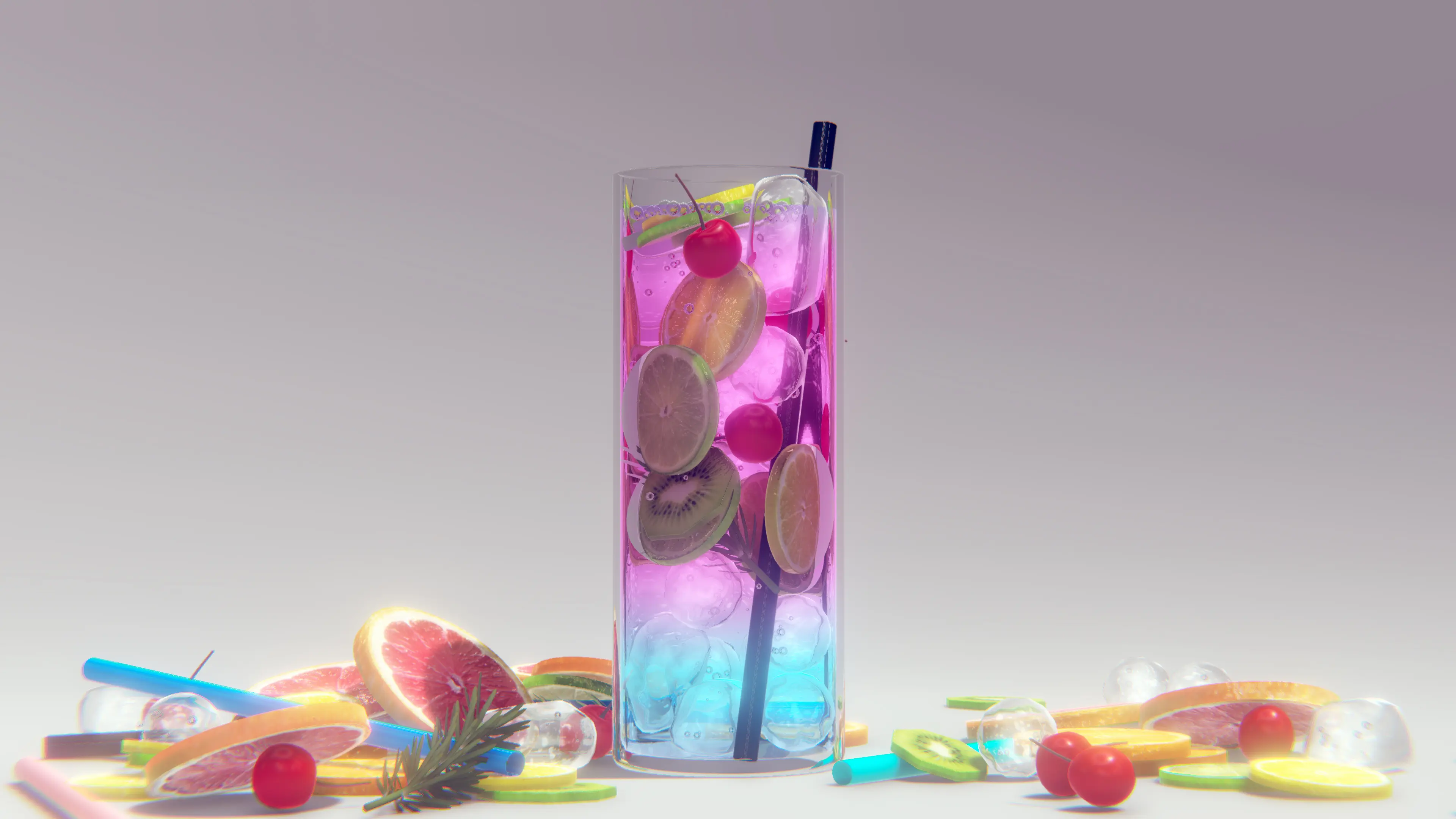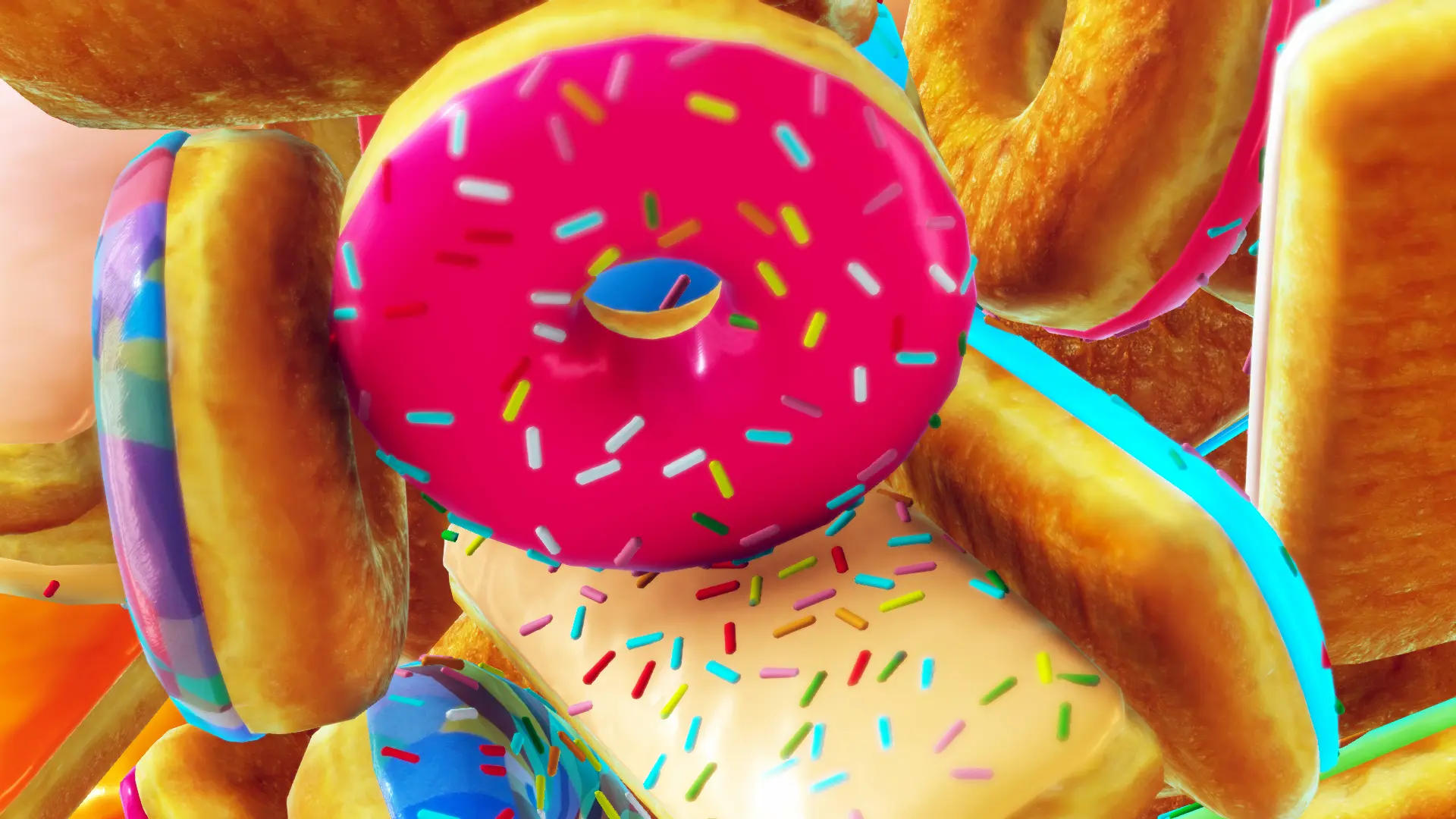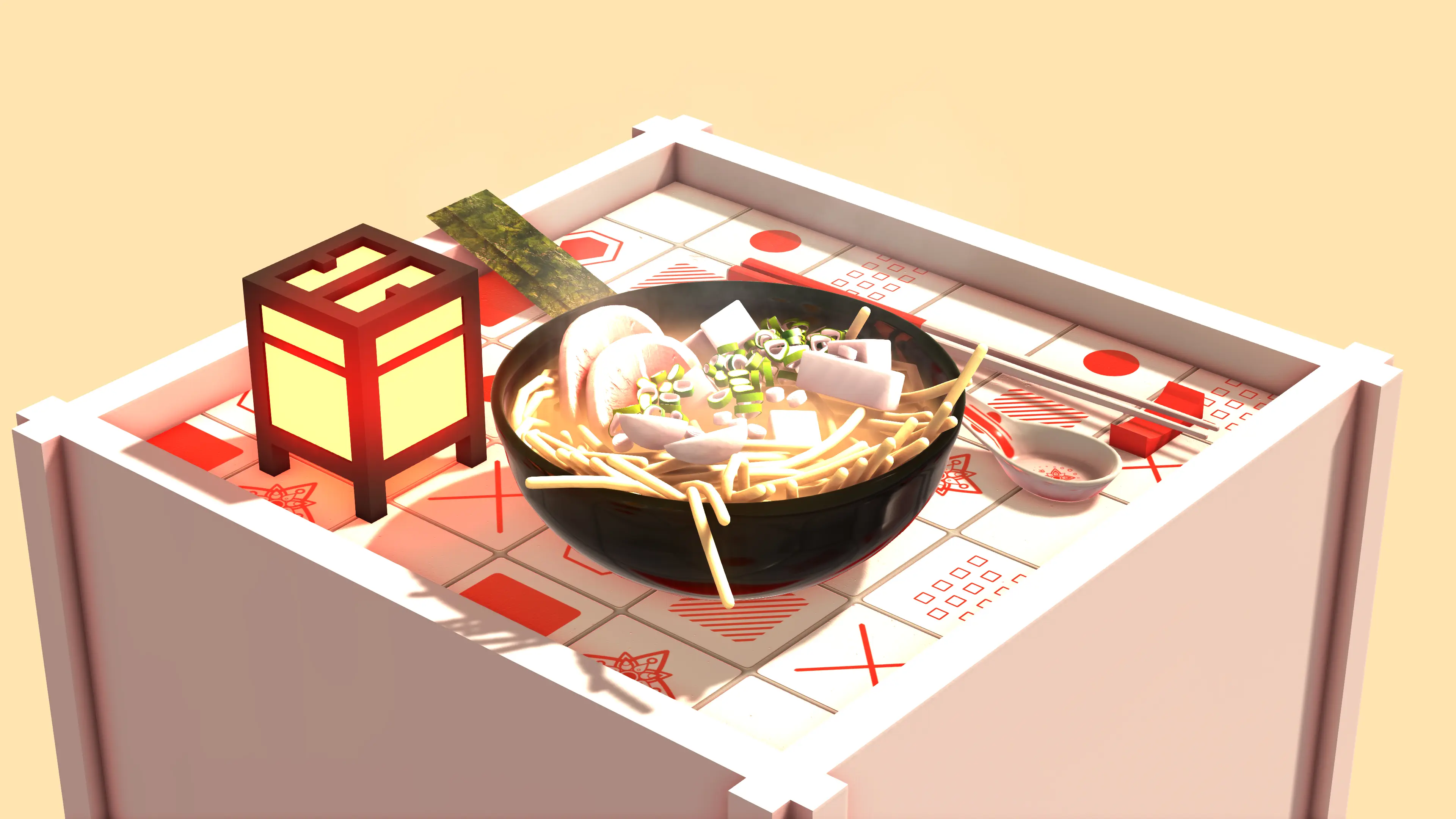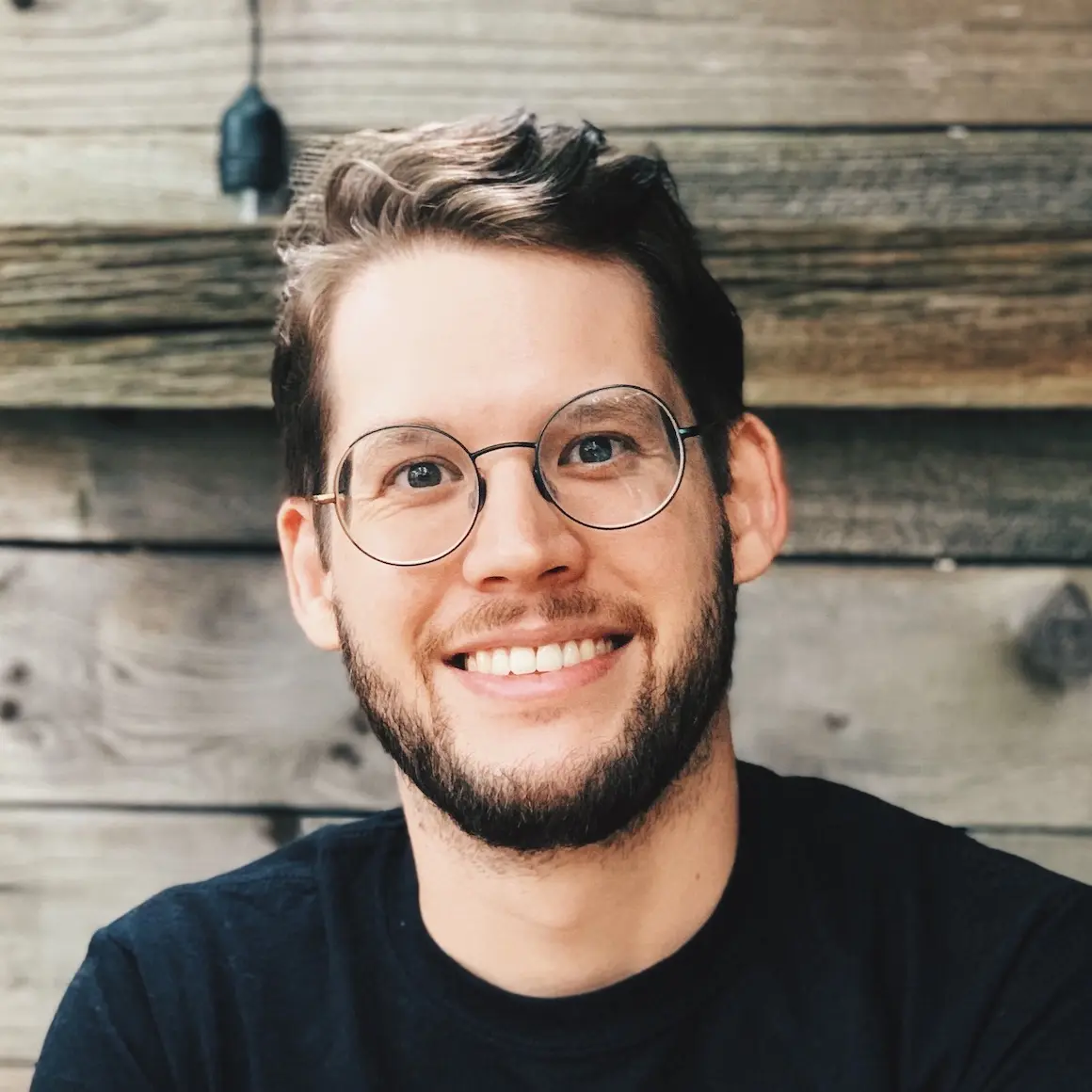
Play with your food: How artist Tj Hughes is creating a virtual world you can taste
Published on September 07, 2022
In the virtual world of Nour, donuts enrobed in rainbow-colored icing tumble from the sky, soft drinks slosh from glassware lit like neon signs, and squares of butter glow incandescent from their perch atop pancakes stacked impossibly high.
“My work puts a huge emphasis on bright colors, [and] vivid saturated brightness,” says Nour’s creator, Tj Hughes, a 3D artist who specializes in digital recreations of food. “And also just a general sense of absurdity, and no real adherence to how things actually work.”
Nour is a video game that’s all about aesthetics, and where the only goal is to play with your food—or the utensils and equipment used to make, manipulate, serve, or consume it. In one interactive vignette three scoops of ice cream sit nestled in a bathtub beneath a sprinkle-spouting shower head. There are hundreds of these hyperrealistic, stylized, interactive food items spanning about 21 different courses, from bento boxes and bowls of ramen, to burger stacks and bubble tea. Though a release date has not been set, Hughes says Nour is coming soon to the PlayStation 5, PC, and Mac.
"I became fascinated with the idea of visuals that make you hungry, or that make you feel a certain flavor—like implied synesthesia"
Hughes, who lives in St. Louis, Missouri, has been developing Nour since 2016—first as a solo artist, and more recently, with a far-flung team of collaborators and friends. “I put a lot of emphasis on where I’m based because I feel like not a lot of people are from St. Louis doing this stuff,” he says.
His career as a visual artist goes back even further. His mom is also an artist—an acrylic painter—which inspired Hughes to make images too. “From an early age, I wanted to do 3D renders, but I had no idea how,” says Hughes, who started drawing with pen and paper, then MS Paint, but struggled to replicate the kind of video game quality graphics he envisioned in his mind. "As soon as I found software that would let me do that, I was all on board.”
We spoke to Hughes about his inspiration for Nour, going from a solo artist to part of a team, how he collaborates with his teammates remotely, and, naturally, the best meal he’s ever had.

Every screenshot or video I’ve seen of Nour is full of neon-colored beverages, highly saturated desserts, or hyper-realistic fruit. Everything seems to bounce or splash. It feels very playful! How did you figure out that this is how Nour should look and feel?
The entire project started as an art test. I had just learned about shaders—[Ed. note: the pieces of code that tell a computer how to light an object]—and I asked myself, ‘What’s the most fun thing I could make?’ And the first thing that popped in my head was bubble tea. Like, obviously. The colors, the gradients—it just lends itself to that perfectly. So I made an attempt at that, and then I uploaded it to Twitter. I remember a few friends just being like, ‘Oh my gosh, that looks so good. That instantly made my tongue get this fruit flavor on my mouth just by looking at this.’
From there, I became fascinated with the idea of visuals that make you hungry, or that make you feel a certain flavor—like implied synesthesia. When you think of food in anime, and 3D renders of food, they have this quality about them that makes you hungry just by looking at it. I wondered if games could capture that same feel. Because usually, in games, food is an afterthought. No one really takes the time to fully sculpt and model food at high resolutions. It’s usually something in the background, really far away from the camera. I was kind of fascinated with, like, ‘What if you zoomed in on this one piece in a video game?’
What kind of visuals did you look to for inspiration?
Definitely Ghibli films, and anime in general. It’s 2D, but it still makes you so hungry. There’s so much care put into rendering these foods. I’m just like, ‘What kind of care can we give these same things in 3D?’
Food commercials is another thing. They’ll take the time to artificially make food look so good. They’ll inject buns with this filler to make it look extra good, but it just becomes entirely inedible in the process. Something about that really fascinates me, where it’s just like, ‘Okay, we’re putting all our stock into the visual appeal.’ But it’s no longer actually food at that point.
You’ve had to build your own library of food models. What's your approach to organizing it all? I imagine if you make a doughnut, you need to know where the sprinkle assets are located, the textures. What's your process for keeping all that straight?
It started out so disorganized. I would literally just throw everything into a folder. It was so bad. But once other folks started working on the game, I was like, ‘Okay, we actually have to organize it.’ So then I started putting things in folders by the food. I would just have a donut folder, and that's where all the textures would go. But then I had to get even more granular because we started getting even more ambitious with our ideas. Now I separate it by level—like, ‘Okay, here's all the models for this level. Here's all the textures for this food.’ The materials…that's still unorganized. But you know, it's fine. You can just search it by name. It’s fine. [laughs]

When you started you were working on your own. Now you have a team of collaborators. What's that transition been like, going from a solo artist to part of a team?
It’s been super interesting, because being a solo artist, there’s no limit to how many different things you have to learn how to do. One day I'm a business owner and I'm learning about taxes. One day I'm doing my normal thing, 3D modeling, but then one day I'm doing photogrammetry, and then one day I’m a UI graphic designer. There’s so many hats to put on, so many things to learn.
Now that you're working with a team, how do you collaborate? How are you keeping each other updated and sharing work with one another and doing the work of making the game?
It's all through Discord nowadays. It's a really good way to informally make stuff together. We've never been super businessy about it. We‘re all just kind of like, ‘Yo, it would be tight if we did this.’ Then we whip something up, take a screenshot of it, and send it to each other.
"My favorite thing that folks do after playing a demo of the game is tell me stories about their food"
The collaborative process in general has been really cool. Because, in addition to me putting on a bunch of different hats, the folks I'm working with are doing the same. My music producers, Maximilian and Jame, they’re making this really fun soundtrack. At first, I would just use tracks that they already made. But then later, they went in and dissected each song in the game, so it dynamically builds as you're playing with your food. When you're spawning foods, it's playing sounds that are in key with the entire soundtrack. Them figuring that out evolved into actual gameplay programming assistance. They'll be like, 'Hey, what if this happened?’ They'll whip up a little demo, and I'll be like, ‘Oh, that's cool. We should put that in the game.’ They’ve picked up game development, just to be able to express their ideas better.
When you're all getting together to figure this stuff out, are you screen sharing on Zoom calls? Or is it sending people short videos of, like, ‘Hey, here's what I'm trying to do’? How does the actual work happen?
It's a little bit of everything. We take videos and screenshots of the stuff we’re working on and send it in Discord. Then we'll be like, ‘Oh, snap. How'd you do that? Tell me about this, I want to add this thing to it.’ Then we're like, ‘Okay, get on a call at this time.’ It’s hard because we all have different schedules. I’m doing this full time. Jame has a day job, so he’s only [available] in the afternoons. Same with our main programmer. Maximilian literally just graduated from Harvard. We’re all over the place, trying to make our lives happen. But we also really care about this game and trying to finish it.
How does something like a bowl of ramen get into the game? How do you take an idea like that from your mind to a state where it’s ready for someone to play with?
I try to do as little sketching as possible. I'm someone who likes to imagine exactly how to make something look nice, where the sketch and the final thing is kind of the same. I also try not to overdo certain things. There are certain objects that just straight up won't have a texture, or will be just a very basic object. Like noodles, for example. It's literally just a cylinder. But depending on the material you give it and how you bend it, that's what sells the effect. I do a lot of stuff like that—a lot of smoke and mirrors, just finding the shortest way to make something look convincing.

What’s been the most challenging food to get right?
There's a soft drinks level in the game, and anything involving liquid is just inherently difficult in 3D. That's the thing we haven't quite figured out. You can’t do a whole body of water in a cup. I had to do so much trickery for that. It was so difficult, but I managed to fake it.
How do you hope people will feel when they finally get to play Nour for the first time?
My favorite thing that folks do after playing a demo of the game is tell me stories about their food. Someone will describe putting broccoli in a mountain of mashed potato—just telling me little things that they would do as kids with food. I want folks to think about their relationship with food and what it means in their life, what fun they've had with it—and what the best meal they've ever had was.
Well now I have to ask: What’s the best meal you’ve ever had?
[Laughs] The best meal? Oh my gosh. One time, when I was in San Francisco, I had this really simple meal, but it just hit so hard. It was just a plate of fried plantains, beans, and sour cream. For some reason, that was one of the best flavor combos I’ve ever had in my life. I don't know what it was about it, but it was just perfect.
Nour is coming soon to the PlayStation 5, Mac, and PC. This interview has been lightly edited and condensed.














.png/_jcr_content/renditions/hero_square%20(1).webp)

.png/_jcr_content/renditions/hero_wide%20(1).webp)



.png/_jcr_content/renditions/hero_square%20(3).webp)
.png/_jcr_content/renditions/blog%20(1).webp)

.png/_jcr_content/renditions/hero%20(1).webp)
.png/_jcr_content/renditions/hero_wide%20(1).webp)














































.png/_jcr_content/renditions/1080x1080%20(1).webp)










.gif)







































































.png)
.png)
.png)
.jpg)
.jpg)













































































































































































































































































































































































